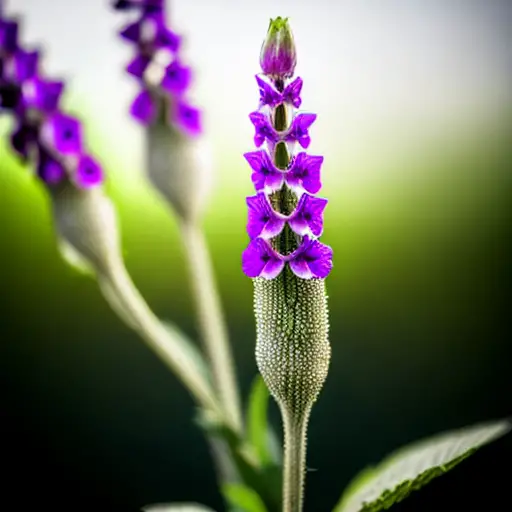Introduction to Foxgloves: Understanding the Enchanting Beauty and Unique Characteristics of Foxglove Plants
Welcome, fellow plant enthusiasts, to the whimsical world of foxgloves! These enchanting beauties are like the fairies of the garden, with their tall spires adorned with delicate, bell-shaped flowers. Now, before you dive headfirst into the mesmerizing world of foxgloves, let's talk about how to care for these captivating plants. First things first, foxgloves prefer a cozy spot with partial shade, as they can be a tad sensitive to the scorching sun. Secondly, they have a penchant for moist, well-draining soil, so make sure to keep their feet happy. And here's a pro tip: if you want to witness their magical blooms year after year, don't forget to deadhead those spent flowers. Trust me, your foxgloves will thank you with an extra sprinkle of enchantment!
Choosing the Perfect Spot: Providing Optimal Growing Conditions for Your Foxglove Plant
An interesting fact about caring for a foxglove plant is that while it is a stunningly beautiful flower, it is also highly toxic if ingested. The plant contains cardiac glycosides, which can cause severe poisoning if consumed. However, this toxicity also serves as a defense mechanism for the plant. Animals, including humans, are deterred from eating it due to its bitter taste and potential harmful effects. So, when caring for a foxglove plant, it is important to handle it with caution and keep it away from children and pets to ensure their safety.
Picture this: a foxglove plant standing tall and proud, basking in the glory of its surroundings. To ensure your foxglove thrives in all its splendor, it's crucial to choose the perfect spot for it to call home. These majestic plants prefer a location with dappled sunlight, where they can dance between rays of light and gentle shade. Additionally, foxgloves appreciate well-draining soil, so be sure to provide them with a cozy bed that won't leave their roots feeling waterlogged. Remember, finding the ideal spot for your foxglove is like finding the perfect stage for a captivating performance – it sets the scene for a showstopper!
Nurturing Your Foxglove: Essential Care Tips for Promoting Healthy Growth and Blooming

Nurturing your foxglove plant is like tending to a delicate masterpiece in the garden. To ensure healthy growth and abundant blooming, there are a few essential care tips to keep in mind. Firstly, foxgloves appreciate regular watering, especially during dry spells. However, be cautious not to overwater, as soggy soil can lead to root rot. Strike a balance by keeping the soil consistently moist, but not waterlogged.
Secondly, foxgloves are heavy feeders, so providing them with a nutrient-rich diet is key. Before planting, amend the soil with organic matter such as compost or well-rotted manure. Additionally, a balanced fertilizer applied every few weeks during the growing season will give your foxgloves the nourishment they need to flourish.
Another crucial aspect of foxglove care is proper staking. These tall beauties can sometimes get top-heavy, especially when their majestic flower spikes emerge. To prevent them from toppling over, gently insert stakes around the plant and secure them with twine. This will provide the necessary support, allowing your foxgloves to stand tall and proud.
Lastly, to promote continuous blooming and prevent self-seeding, it's important to deadhead your foxgloves. As the flowers fade, simply snip off the spent blooms to encourage new growth and prolong the blooming period. Not only will this keep your foxgloves looking tidy, but it will also prevent them from spreading too aggressively in your garden.
Remember, caring for foxgloves is like nurturing a work of art. With proper watering, feeding, staking, and deadheading, your foxgloves will reward you with a breathtaking display of enchanting beauty, making your garden a whimsical haven for both you and the visiting pollinators. So, roll up your sleeves, put on your gardening gloves, and let the magic unfold!
Preventing Common Issues: Troubleshooting Problems and Protecting Your Foxglove Plant's Well-being
Fun fact: Did you know that foxglove plants prefer to grow in partial shade? While they can tolerate full sun, they thrive in areas with dappled sunlight or morning sun and afternoon shade. So, if you want to keep your foxglove happy and healthy, make sure to provide it with the perfect balance of light!
While foxgloves are generally hardy plants, they can encounter a few common issues that may hinder their well-being. One such problem is powdery mildew, a fungal disease that can affect the leaves and stems. To prevent this, ensure proper air circulation by spacing your foxgloves adequately and avoiding overcrowding. If powdery mildew does appear, treat it with a fungicide or a homemade solution of water and baking soda. Additionally, keep an eye out for slugs and snails, as they have a fondness for feasting on foxglove foliage. Protect your plants by using organic slug repellents or creating barriers around them. By troubleshooting these common issues and taking proactive measures, you can safeguard the health and vitality of your beloved foxglove plants, allowing them to thrive and enchant your garden for seasons to come.

